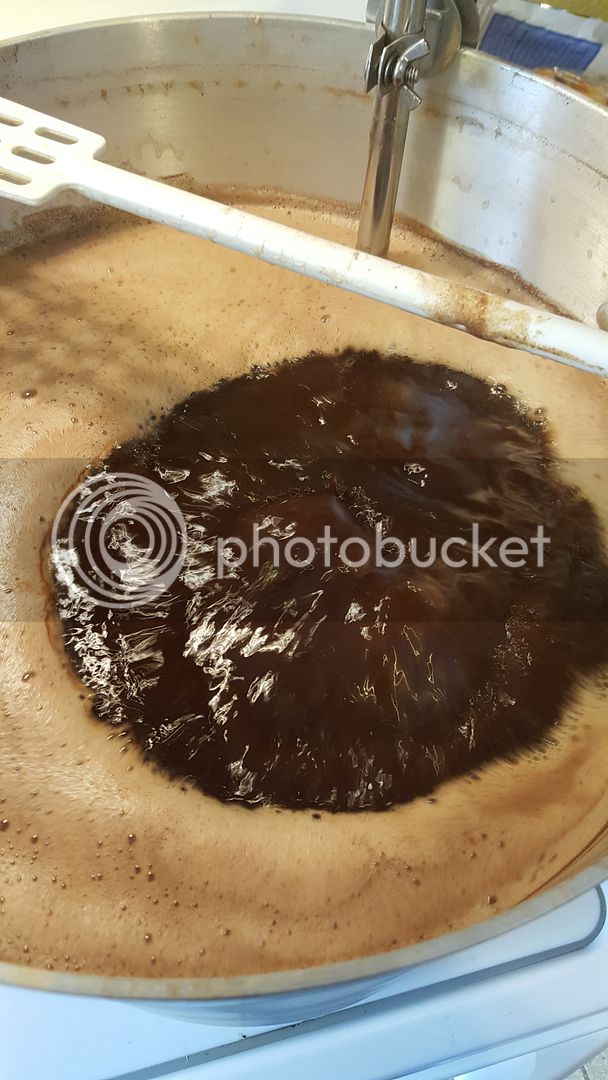Why? Why does it take 14 pounds of grain and 10 gallons of water? How big is your batch, what is the OG of the wort, how much do you boil off or lose to the grain?
Why does he need to go to stainless steel? Many of us do just fine with aluminum at a much lower cost.
Why does he need a cake rack to avoid scorching? I bring the water to strike temp before I put the bag in and never add any heat until the bag is out again. No possibility of scorching that way.
For a small additional investment, SS will be much easier to clean without damaging. Save $40. now, or save time cleaning every batch - your choice.
If you want to raise the temperature during the mash or for a mashout with the bag in, keeping it off the bottom is a good idea.
Sample recipe:
House IPA
Recipe Overview
Style: American IPA
ABV: 6.3%
Original Gravity (OG): 1.065
IBU's (Tinseth): 65
Bitterness to Gravity Ratio: 1
Kettle Efficiency (as in EIB and EAW): 78.1 %
Efficiency into Fermentor (EIF): 70.3 %
Note: This is a Pure BIAB (Full Volume Mash)
Times and Temperatures
Mash: 90 mins at 65.5 C = 149.9 F
Boil: 90 min
Volumes & Gravities
Total Water Needed (TWN): 37.91 L = 10.02 G
Volume into Boil (VIB): 33.67 L = 8.9 G @ 1.048
Volume of Ambient Wort (VAW): 23.86 L = 6.3 G @ 1.065
Volume into Fermentor (VIF): 21.5 L = 5.68 G @ 1.065
Volume into Packaging (VIP): 20.7 L = 5.47 G @ 1.016 assuming apparent attenuation of 75 %
The Grain Bill (Also includes extracts, sugars and adjuncts)
94.1% 2-Row (3.5 EBC = 1.8 SRM) 6313 grams = 13.92 pounds
2.5% Crystal 10 (40 EBC = 20.3 SRM) 169 grams = 0.37 pounds
3.4% Vienna 226 grams = 0.5 pounds
The Hop Bill
50.8 IBU Columbus Pellets (13%AA) 42 grams = 1.483 ounces at 60 mins
5.6 IBU Amarillo Pellets (10.8%AA) 28.1 grams = 0.99 ounces at 5 mins
0 IBU Falconers Flight Pellets (10.8%AA) 28 grams = 0.988 ounces at mins (Dry Hopped)
Mash Steps
Mash Type: Pure BIAB (Full-Volume Mash): Saccharifiaction for 90 mins at 65.5 C = 149.9 F
Strike Water Needed (SWN): 38.66 L = 10.21 G 66.5 C = 151.6 F
Mashout for for 10 mins at 78 C = 172.4 F





